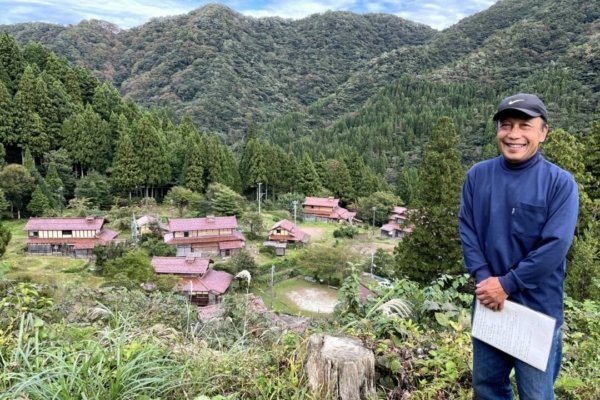Noburu Nimaida fondly recalls the snow-covered village of Ozuchi in Japan where he lived at the age of 10. The village, buried under 13 feet of thick snow, provided the adults with stress from the blizzards, but for him, it meant the joy of building snowmen – one of his happiest childhood memories. However, this joy, much like his village, became a part of his past when Nimaida left at the age of 15 to seek work in the city.
He was not the only one who left his hometown.
Like many small villages in the southwest of Ishikawa Prefecture in central Japan, most of the 300 residents of Ozuchi made a living producing charcoal. When Japan shifted to primarily using natural gas, many families in the village were forced to leave in search of work. Eventually, the settlement was left with an aging population, with no new residents coming in.
After leaving Ozuchi, the now 71-year-old Nimaida had adjusted to city life and seldom considered returning to his childhood village. However, at the turn of the century, he visited the area to see a friend, and it changed his mind. In an interview with The Epoch Times, he described the experience of learning that his friend’s village had been completely abandoned.
“It was then that I realized I didn’t want the same fate to befall Ozuchi, and I wanted to do all I could to make a change,” he said.
He decided to preserve the unique atmosphere and heritage of his village.
Now, Nimaida has transformed his life. He resides in Ozuchi with only his cat for company, and he considers it the greatest adventure of his life. This has brought about numerous challenges, from growing his own food to protecting his crops from wild boars and bears.
Upon returning to Ozuchi, Nimaida devoted most of his time to charcoal production and rice cultivation, collaborating with volunteers who now assist him in revitalizing the village. He shared that they collectively plant around 220 pounds of rice each year to sustain themselves and the volunteers.
Growing rice and harvesting charcoal are not just a way of returning to the roots of the village but also a continuation of ancient customs.
“Charcoal production is an essential technique adopted in Japanese rural areas since ancient times,” he explained. “This process is not just about charcoal production but is closely linked to coexisting with nature and passing down traditions.”
Nimaida detailed the process of charcoal production.
“The process starts with cutting the wood, then the firing,” he said. “… It’s an exhausting three to four days to a week process. After firing, let the kiln cool for a few days. This cooling process is crucial and must be carefully controlled because sudden temperature changes can affect the quality of the charcoal.”
Whether making charcoal, toiling in the rice fields, or tending to chores in the village, Nimaida’s life is busy.
Most of the work involves maintaining the rice fields to ensure weeds do not block the flow of water to the crops. He also maintains the remaining 10 houses in the village. He mentioned that when volunteers come to help, they spend a lot of time planning for future projects.
The entry of volunteers in 2013 shifted Nimaida’s mindset, and interaction with younger individuals provided him with a fresh perspective. For example, they created a map of the village showcasing what the village could offer “in a new way,” he said.
Learning goes both ways. Now, Nimaida envisions Ozuchi (and over 10,000 similar sparsely populated villages across Japan) as new learning centers for the younger generation.
“For the younger generation worldwide, it’s crucial to graduate from university, have clear goals, and join a large company,” he said. “However, if you are still unsure of your goals, testing yourself in sparsely populated areas could be a fantastic experience.”
He added that living in sparsely populated areas provides a valuable opportunity to reflect on oneself while understanding nature and traditions, particularly without the interference of modern technology and the hustle and bustle of city life.
“In today’s world, the media often focuses on the glamorous and enticing aspects of life, making people easily feel inadequate or discouraged. While pushing oneself and striving for excellence is important, true happiness comes from self-awareness and setting realistic, achievable goals,” Nimaida stated.
This is the legacy he hopes his childhood village will leave behind in the next 100 years.

